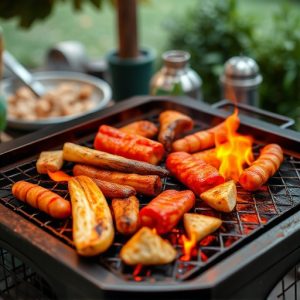Selecting perfect BBQ ribs involves choosing meaty, well-marbled options like baby back or spare ribs. Chilling and dry aging enhance flavor penetration. Crafting a balanced dry rub with spices like salt, pepper, paprika, garlic powder, cayenne, thyme, rosemary, and oregano is key. Apply the rub generously, let it rest, then grill for tender, juicy results. Master grilling or smoking techniques, complement with sides, and store leftovers properly to savor your BBQ ribs recipe again and again.
Discover the secret to mouthwatering BBQ ribs with a flavorful dry rub—the ultimate game changer for your grill sessions! This comprehensive guide takes you on a journey from choosing the perfect ribs to mastering application techniques and cooking methods. Learn the science behind dry rubs and explore an array of ingredients that promise to tantalize your taste buds. Elevate your rib game with serving suggestions, pairings, and tips for storing leftovers.
- Choosing the Perfect Ribs
- The Science Behind Dry Rubs
- Ingredients for a Flavorful Dry Rub
- Creating and Adjusting Your Rub
- Application Techniques for Optimal Results
- Cooking Methods: Smoking vs. Grilling
- Serving Suggestions and Pairings
- Storing and Reheating Leftovers
Choosing the Perfect Ribs
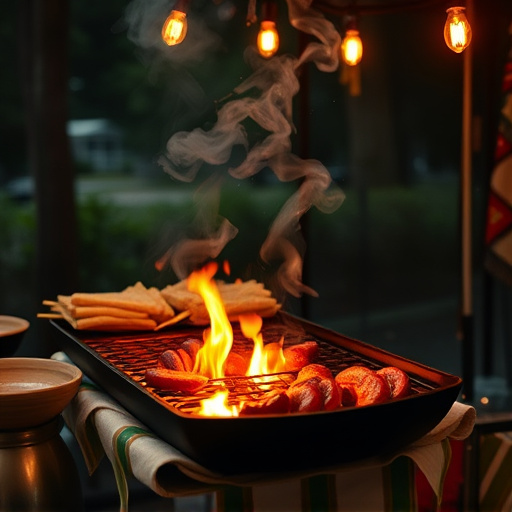
When it comes to crafting a killer BBQ ribs recipe, selecting the right cut is key. Look for meaty, full ribs with good marbling – this ensures each bite is packed with flavor. Opting for baby back ribs or spare ribs is a popular choice; both offer a balance of meat and bone that holds up well under various cooking methods. Remember, quality ribs are essential for an exceptional dry rub experience.
Consider the source too – locally sourced, grass-fed ribs often provide a superior taste profile compared to mass-produced options. Freshness matters! Ensure your ribs are well-chilled before applying your favorite dry rub blend, allowing the spices to penetrate and enhance the overall flavor.
The Science Behind Dry Rubs
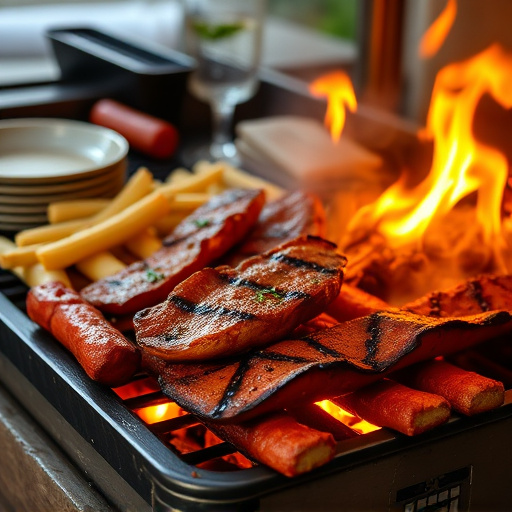
The science behind dry rubs for BBQ ribs lies in the art of seasoning, where specific herbs and spices are combined to create a complex flavor profile that enhances the natural taste of the meat. Dry rubs differ from wet marinades as they don’t require any liquid base, instead relying on the friction created during rubbing to infuse flavors into the rib meat. This process, known as dry aging, helps break down connective tissues, making the ribs more tender and juicy. The right mix of spices can add depth and warmth, balancing sweet, savory, and even slightly spicy notes, resulting in mouthwatering BBQ ribs that satisfy any appetite. When crafting a dry rub recipe for rib lovers, focusing on high-quality ingredients is key to achieving that perfect balance and creating a memorable BBQ ribs recipe.
Ingredients for a Flavorful Dry Rub
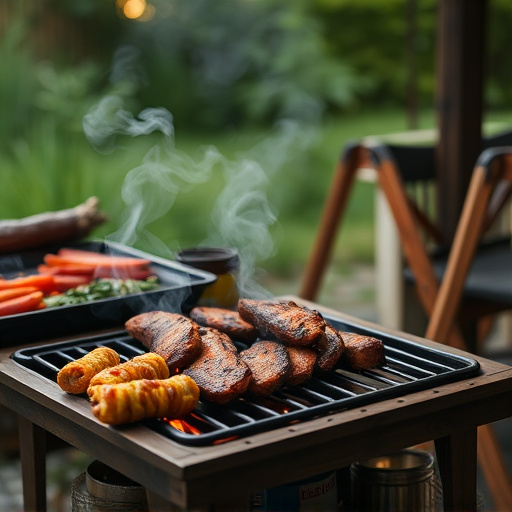
When crafting a flavorful dry rub for mouthwatering BBQ ribs, it’s essential to balance spices for a complex and delightful taste profile. A top-notch rub typically includes a blend of salt, pepper, garlic powder, onion powder, paprika (smoked or regular), cayenne pepper (for heat), and a variety of dried herbs such as thyme, rosemary, or oregano. These ingredients work together to enhance the natural flavors of the ribs, creating a savory and slightly sweet coat that’s sure to impress.
For a balanced BBQ ribs recipe, consider using 2-3 tablespoons of each spice blend per pound of ribs. Adjusting the cayenne pepper will tailor the rub to your preferred heat level—whether you prefer a mild, medium, or spicy kick. Pre-rubbing the meat for several hours or overnight allows the flavors to penetrate the meat for an even more tender and flavorful result when grilled or smoked.
Creating and Adjusting Your Rub
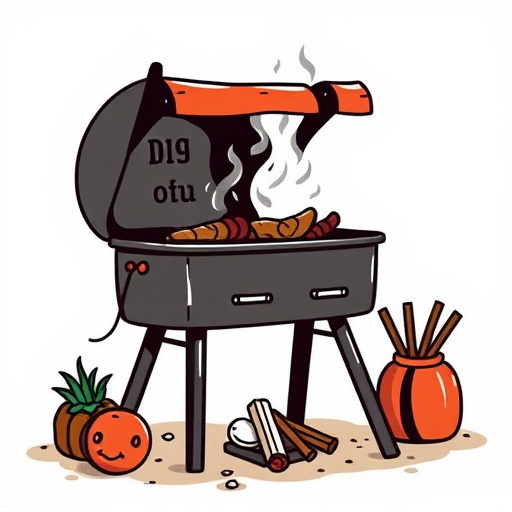
Creating a flavorful dry rub for mouthwatering BBQ ribs is an art that involves balancing spices to enhance the natural meat flavors. Start with a base of salt and pepper, as these are essential for seasoning. Then, experiment with a variety of spices like paprika, garlic powder, onion powder, cayenne pepper, and brown sugar. Adjusting your rub is key; consider the desired level of heat and sweetness, whether you prefer a smoky or tangy flavor profile. For a classic BBQ ribs recipe, a simple 50/50 blend of salt and pepper often works wonders. However, feel free to get creative by adding herbs like dried thyme or oregano for an extra layer of complexity. Each ingredient contributes to the overall taste experience, so tweak the rub until it meets your perfect flavor criteria.
Application Techniques for Optimal Results
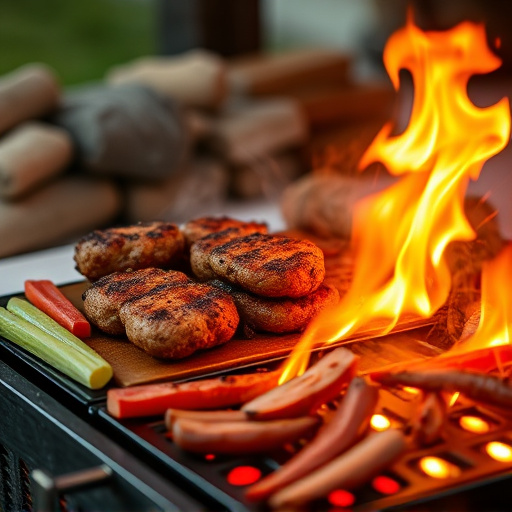
For optimal results with this mouthwatering ribs recipe, understanding application techniques is key. The dry rub should be generously coated onto the ribs, ensuring every surface is evenly covered. This step is crucial for infusing maximum flavor into your BBQ ribs. You can use a spice brush to apply the rub, which allows for precise control and prevents any mess. Rubbing the spice mix into the meat ensures that each strand of rib absorb the aromatic spices, creating a complex, savory taste profile.
After coating the ribs, give them time to rest and allow the flavors to meld together. This resting period can significantly enhance the overall experience. During this time, the rub will deepen its penetration, making every bite utterly delicious. Once ready, fire up your grill and sear the ribs to lock in that tantalizing flavor, resulting in tender, juicy, and exquisitely seasoned BBQ ribs that are sure to impress.
Cooking Methods: Smoking vs. Grilling
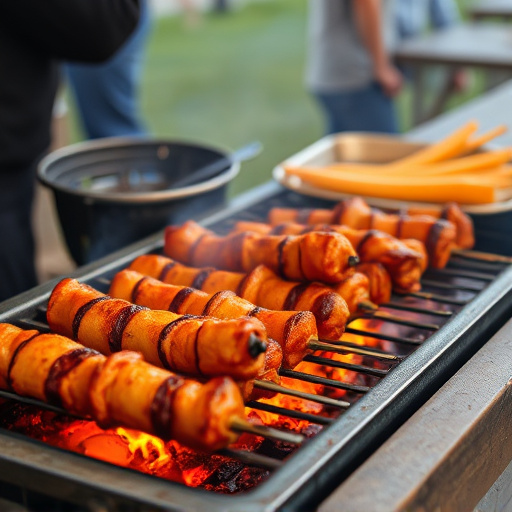
When it comes to cooking BBQ ribs, there are two dominant methods that deliver mouthwatering results: smoking and grilling. Each technique has its own unique characteristics that influence the final flavor and texture of your ribs. Smoking, often considered a slower process, involves cooking the meat at low and consistent temperatures over an extended period. This method infuses the ribs with rich, smoky flavors from the wood used—hickory, oak, or mesquite being popular choices. The slow cook allows the collagen in the meat to break down, resulting in tender, almost fall-off-the-bone ribs.
In contrast, grilling offers a quicker approach where direct high heat is applied to sear and char the exterior of the ribs while locking in juices internally. This technique produces a sweet, smoky flavor with a tantalizing crust. Grilling is ideal for those who prefer a faster cooking time or want to achieve a more distinct grill mark on their ribs. Whether you’re smoking for hours over low heat or grilling for a shorter duration, both methods culminate in delicious BBQ ribs that are sure to satisfy any appetite.
Serving Suggestions and Pairings

When it comes to serving your mouthwatering ribs, the options are endless. For a classic pairing, serve your juicy, tender BBQ ribs with a side of coleslaw or mac and cheese for a comforting and satisfying meal. If you’re looking to elevate the experience, consider adding grilled corn on the cob, crispy fried onions, or a refreshing salad with a tangy vinaigrette.
For an ideal bbq ribs recipe, pair your dry rub ribs with a variety of sides that complement their robust flavors. Think smoky beans, savory baked potatoes, or even a simple green salad tossed in a homemade vinaigrette. Crafting the perfect meal involves balancing textures and tastes— ensuring every bite is an explosion of flavor that keeps folks coming back for more.
Storing and Reheating Leftovers
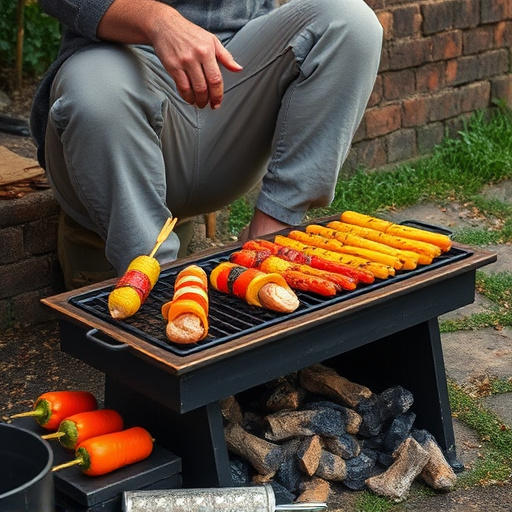
When it comes to storing and reheating leftovers of your mouthwatering BBQ ribs, there are a few simple steps to ensure they retain their flavor and texture. After all, no one wants dry, tasteless ribs! The best way to preserve the deliciousness is by storing them properly in an airtight container in the refrigerator. This will keep them fresh for up to 3-4 days. If you’re planning to reheat, consider warming them gently in the oven or on the stovetop, adding a little extra BBQ sauce to maintain moisture and flavor.
Reheating should be done carefully to avoid drying out the ribs. A slow and low approach is key; this way, the meat stays tender and juicy. You can also cover them during reheating to trap in that mouthwatering humidity. Plus, leftovers give you a chance to enjoy your BBQ ribs recipe all over again!
